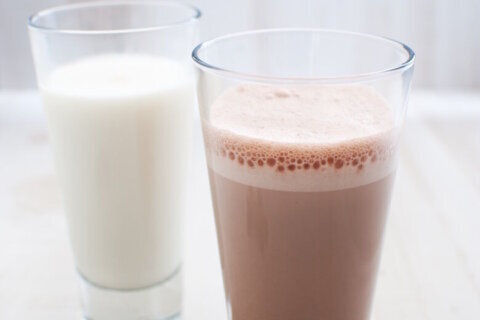I have lived in Southern California for 30 years. So, how did I feel after Governor Jerry Brown’s announcement on mandatory water restrictions? I felt a thrill! At last, someone had called us out on our excessive water-using ways. Many of us had been feeling guilty about those endless months of sunshine, with not a raindrop in sight, but ample water pouring through our taps (and green lawns and perky posies!). We had finally received the direction we needed to reduce our water consumption and start living in balance with our natural surroundings.
So, I’m gladly joining the movement to significantly reduce my home water usage. This is a huge step down the path of sustainability. I’m ripping out my lawn, shortening my showers and even collecting gray water (shower water, sink water) in a bucket for watering plants. But there’s even more that all of us can do to save our precious water supply. And it’s all about what we put on our plates.
Every bite of food has a “water footprint” — the amount of total water it takes to produce food from farm to fork. In fact, we are literally drinking our food; about 70 percent of the world’s water supply goes to growing food. Here are my six tips for slashing your water footprint with your fork:
1. Eat a plant-based diet. Eating plants instead of animals can really lower your water footprint. Forty percent of the water consumed in the U.S. goes to animal food production. That’s because in modern animal agriculture, you have to grow plants (with all the water required to grow them), then you feed those plants to animals. Animals are thirsty, and drink a lot of water over their lives before they become meat. That’s why it takes about 1,600 to 2,500 gallons of water to produce one pound of beef, and only 257 gallons for the same amount of soybeans, 146 for corn, 290 for oats and 34 for broccoli. Instead, you could eat those plants directly from the soil and skip feeding them to animals. That’s why studies find that plant-based diets, such as vegetarian and Mediterranean diets, have been linked with a much lower water footprint.
2. Cultivate edible landscaping. If you have garden space, don’t use it all up on plants that provide no sustenance. You can use that same space (and water!) to grow plants that provide food. Start with a container vegetable garden or some pots with tomatoes or herbs. Plant a fruit tree instead of a non-bearing tree. Plant edible plants that suit your growing region. For example, in California we have a Mediterranean climate, so I’ve planted trees that thrive in our sunshine: figs, persimmon, pomegranates, olives and citrus. Instead of watering trees that merely look pretty, I’m watering trees that can provide food for my family and friends. But don’t rip out all flowering plants from your garden; they attract pollinators that are important for food cultivation. Look for native wild flower species in your region, which grow without man-made inputs.
3. Cut down on food waste. You pour out precious water with every morsel of food you throw in the trash. In fact, we’re wasting about 40 percent of the food produced in the U.S. Worldwide, a whopping 24 percent of all water used in agriculture goes right down the drain due to food waste — that’s 45 trillion gallons a year to produce 1.3 billion tons of food that will never be eaten. So, adopt a zero-food-waste policy! Pack up those leftovers, take home doggy bags, keep a careful eye on expiration dates and use the entire food — from root to stem.
4. Ditch the water bottle. The bottled water habit is one of the most unsustainable habits you can acquire over your lifetime. It’s not just fossil fuel intensive (from the creation of plastic bottles to hauling them all over the country); nor is it only an issue of heaping landfills resulting from discarded water bottles. It takes an estimated 3 liters of water to produce 1 liter of bottled water because of the production process. Get a reusable water bottle, and use it!
5. Eat whole, nutrient-rich foods. Every bite of food takes resources to be produced, including water. Some farmers and food companies produce wholesome, healthful foods, such as fruits, vegetables, whole grains and beans, and others produce highly-processed foods, such as sugary sodas, snack crackers and cookies. By focusing on high-nutrient foods, you eat sustainably because the resources (like water) required to produce the foods are used to support human health. When you choose the latter — highly-processed junk foods — those resources are used to produce foods that don’t support human health. It’s as simple as that.
[IMAGE]
6. Eat in balance with your body. Did you ever stop to think that when you overeat and overindulge — eating more food than your body requires to sustain itself — it’s an unsustainable action? The average adult requires about 2,000 calories per day to maintain a healthy body (more or less depending on your age, gender and activity). When you exceed the level that your body needs to thrive, you are essentially wasting resources needed to produce that food. Living in balance with your own body is one of the most important things you can do to live more sustainably during your lifetime — it’s also good for your health.
More from U.S. News
The 10 Best Heart-Healthy Diets
7 Reasons to Choose a Plant-Based Diet
10 Tips for Saving Money on a Plant-Based Diet
6 Ways To Cut Your Water Usage With Your Fork originally appeared on usnews.com







